Upon formation in 1899 Blyth Spartans may have had a remarkable future ahead but it took the fledgling club nearly 10 years to find a permanent home, using 5 other sites before settling at Croft Park.
All bar one of the sites have been clustered around the same area, to the south-west of what is now the town centre. At the turn of the century this area was largely undeveloped so it is no surprise that this is where open land was available for recreational purposes.

 The club’s 1st ground was fairly humble and it doesn’t even have a proper name.
The club’s 1st ground was fairly humble and it doesn’t even have a proper name.
It was situated near to Percy’s Gardens which is now the junction of Middleton Street and Cypress Gardens, only a short walk from the Kingsway End of Croft Park. This ground was used until early 1901 so it was never used for competitive football.
The next ground, after making do at ‘Blyth Flats’  for a few weeks, was a mile north of Croft Park. The ‘Blyth Flats’ was public area at the end of Blyth links which later turned into Ridley Park.
for a few weeks, was a mile north of Croft Park. The ‘Blyth Flats’ was public area at the end of Blyth links which later turned into Ridley Park.
The 3rd site was originally known as the North Pit ground but was popularly known as the Spion Kop and was used from September 1901 for the next four seasons.
The name comes from a military engagement in 1900 during the Second Boer War where the British defended an exposed hill, taking heavy losses from the Boer Army.
Exposed terraces were named in honour of this battle at several football grounds.
As soldiers from Blyth gave their lives in the Boer War it could be assumed that this ground was named with their loss in mind. However, that the pitch had a distinct slope, “a hill” according to many match reports, may have led to ground’s name having more ironic origins.
*The first use of the ‘Spion Kop’ name for North Pit is reported in December 1903.
It should be noted that the first use of Spion Kop anywhere in football is previously acknowledged to be at Arsenal’s Highbury Ground in 1904 — so Blyth Spartans may instead have a claim to this “first”.
Facilities at Spion Kop amounted to nothing more than it being enclosed to enable the club to charge admission money and the pitch being roped off to separate spectator from players. There were places where the lay of the land meant large numbers of spectators could watch for free, much to the dismay of the administration. A nearby pub was used as the clubs headquarters and the changing rooms!.
However, the main gripe of those running the club was the North Pit pitch as a local writer stated:
“It grieves enthusiasts of the pastime that the Spars should have to perform their pedipulations on such a wretchedly uneven slope, with its deep marked rigs and awkward angles. Pretty play is absolutely impossible”.
That the Spartans were looking to move away from the ground almost as soon as they started to use it speaks volumes.
Like all of Spartans’ grounds, Spion Kop was used by other teams, mainly from minor leagues, as a place for their cup finals. Blyth Stanley played in the Second Division of the Northumberland League and used the ground during the 1902/03 season. The following season, on Stanley’s demise, Blyth Catherine Swifts took up residence.
The Spion Kop ground was vacated just as the area was needed for expanded colliery workings (which became known as Bates Pit).
Bates Pit closed in 1986 and the site was cleared, the site of the football pitch itself after Spartans vacated became allotment gardens for a few years before being developed for housing, Chestnut Avenue and Poplar Avenue cover that area now.
In October 1904 it was announced the Spartans would be leaving Spion Kop for a new ground the following season, it would be just to the south of Plessey Waggon Way.
 This ground was on the south side of Plessey Road in the Crofton suburb of Blyth.
This ground was on the south side of Plessey Road in the Crofton suburb of Blyth.
They played here for the 1905-1906 season only because the land was already earmarked for building. The location of this 4th site is directly over Plessey Road from the southern end of Croft Park.
The housing development here happened in stages and, like Spion Kop, the football ground was converted into allotments before being turned to housing usage sometime later.
The site forms a distinctive outline when compared to the layout of the surrounding houses — the west side of the ground can be traced via the street pattern. The western halves of Hedley Avenue and Hunter Avenue, as well has the northern portion of Shotton Avenue cover this site.
Not everyone was happy with the venue:
“Some critics say it is worse than North Pit. It is deeply rigged and at the entrance end somewhat rough and uneven”.
What it did lack though was the notorious slope, the “Spion Kop” of North Pit, however there were severe drainage problems with this ground with deep puddles forming between the ruts. The report from a game against Shankhouse Albion in December 1905 illustrates the scene perfectly:
“Nixon Thompson was getting into a fine position for shooting when he was pushed into a small lake of water. He was dripping and uncomfortable afterwards”.
Better was expected for £12 a year rent.
Not until April 1906 was news received that Blyth would have to quit Crofton, with the club stating:
“It would be good news if it was supplemented with news of a new plot”.
A great advantage Crofton had was its location — close to the bulk of the town’s population at that time.
The last game played there was Willington Athletic’s Tyne Charity Cup Final victory over Newcastle United ‘A’ watched by 1,200.
 At the AGM of June 1906 it was reported that Spartans had been offered “a good field” on the Thoroton Cottage Road.
At the AGM of June 1906 it was reported that Spartans had been offered “a good field” on the Thoroton Cottage Road.
The field was very level and plans were announced for it to be “railed around”.
The start of the 1906/07 season saw the Spartans begin their tenancy of Thoroton Cottage. They stayed here for three seasons and it is at this ground where Spartans would record their record victory. The site of this ground is now largely covered by the Broadway Circle and the immediate western end of Princess Louise Road at the time this area was farmland. The ground was at the end of Thoroton Cottage Road which very roughly followed the direction of where Renwick Road now lies.
By the early 1930s the town’s westward expansion consumed this land too — where it had been used as allotments — seemingly the fate of all former Spartans pitches.
At the north end of Renwick Road is the Thornton Hotel (popularly known as the Burglar’s Dog) the nearby Thoroton Street, is the only reminder of what else used to be near bearing the same name. The name Thoroton comes from Mr George Thoroton who was the agent of Lord Ridley, the owner of extensive tracts of land in the town.
The first match at Thoroton Cottage was a friendly (although more like a trial match) between Blyth Spartans and a Blyth & District League XI on 5th September 1906.
Soon, there were proposals to build “commodious housing quarters and press accommodation”.
On fine days seating was provided for members and on election to the Northern Alliance in 1907 a turnstile, a members’ gate and a boys’ gate were erected.
The ground was “partially covered round by substantial boards containing tradesmen’s advertisements”.
1908 saw the employment of four gatemen, the strengthening of the barriers around the field and the building of a café. There was one problem little could be done about though — mud, as well as on the pitch it particularly clogged the entrances.
After all the early ground hopping the club was established enough to be given a plot to call home. 5 sites in ten years is some going but the 6th has been the club’s permanent home since 1909.
The move to the new ground was confirmed on 23rd October 1908 after “courteous and generous” negotiations with Mr JM Clark who was agent for the Thoroton and Croft Trustees. It was agreed that the tenancy would begin on New Year’s Day 1909 to enable the club to “ready the enclosure” for the start of the 1909/10 season.

John Goulding
The first act was to completely enclose the ground with a seven feet high fence — work carried out by a Mr JL Wood for £153. Plans for the ground included four turnstiles, a members’ gate and large folding double gates at the main entrance.
‘Stripping quarters’, hot baths and a grandstand were also mooted.
The grandstand was eventually commissioned in March 1909 with the architect being John Goulding (who would later become club President).
The final agreement to go ahead with the 1,000 capacity structure didn’t happen until mid-May and by then the turnstiles and cabins had already been moved across from Thoroton Cottage.
The same JL Wood who enclosed the ground also won the tender to build the grandstand. It was completed by early August for £313 15s 9d.
The new ground was to be known as ‘Croft Park Recreation Ground’ and prices for admittance were set out. A Vice President’s season ticket cost 10 shillings and sixpence (53p) and an ordinary members season ticket good value at four shillings (20p).
Match day entrance was 4d (about 2p) for men, 3d for women and 2d for boys.
“Hawkers of cakes, chocolates, oranges etc. (of which there were many)” were charged a uniform rate for ground entry though it is not recorded how much this was.
A handsome new flag denoting the Northern Alliance championship was supplied by Vice President Robert Nicholson of Beaconsfield Street and flew proudly over the new ground. The total cost of getting Croft Park up to scratch was about £620 of which £300 came from the club profits of the previous two seasons.
To take care of Croft Park a permanent groundsman & caretaker were appointed.
He was called John Douglas and had only one leg!, the other being “boiled” in an industrial accident. Six other gentlemen were employed by the club as gatemen and these were Chas Reaveley, L. Moorhead, F. Turner, R. Howard, J. Vickers and J. Laws.
The first game held at Croft Park was a Possibles v Probables practice match on the evening of the 21st August 1909 and despite the heavy rain about 1,500 attended.
The official opening of Croft Park was on 1st September 1909 when Blyth Spartans played Newcastle United Reserves.
This was also the day a bust of the late Lord Ridley was unveiled in Ridley Park and “most of the leading public men” present at that occasion made there way along to Croft Park for the 6pm kick off on a “beautifully fine” evening.
A gold key was presented to the wife of JM Clark of Bellister Castle, the agent who negotiated the tenancy and in front of “an immense crowd, particularly of the fair sex”, speeches were made Club President A. Askwith thanked Lord Ridley for attending and hoped Blyth Spartans would soon find themselves in “the First League” while Mrs Clark hoped that one day Blyth Spartans would win the “English Cup”!.

Lord Ridley take a run up at the ball.
 2nd Viscount Ridley himself ceremonially started the game by punting the ball towards goal.
2nd Viscount Ridley himself ceremonially started the game by punting the ball towards goal.
The teams in the first match were:
Blyth Spartans;
J. McManus, J. Robson, W. Lawton, M. Pattison, N. Thompson, J. Wright, H. Lamb, J. Holmes, P. Mackin, J.D. Jarvis, W. Gallagher.
Newcastle United Reserves;
Sinclair, George Robson, Thompson, Henderson, Liddell, Hughes, Snowdon, Rutherford, Allan, Randall, Ridley.
The occasion appears to have got to Blyth goalkeeper Jim McManus who had a very poor match as Newcastle won 4-2. Billy Gallagher scored Blyth’s first goal at Croft Park with a penalty and Peter Mackin the first from open play.
On the following Saturday the first competitive match took place at Croft Park and it ended in a goalless draw against Willington Athletic. On the 11th September 1909 Croft Park witnessed Blyth Spartans’ first ever FA Cup match — a 1-1 draw against Washington United. Croft Park was initially an unlucky ground for Spartans it was not until the 16th October that the home fans saw a victory — 3-0 against Morpeth Harriers.
Gradual improvements to Croft Park were funded by the healthy crowds Spartans were attracting as a successful Northern Alliance team. In the four years leading up to the start of World War One in 1914 upgrades were made to Croft Park.
The most noticeable was the erection of a roofless wooden stand at the Kingsway End in October 1912. The eight steps of terracing, dotted with crush barriers, stretched for 80 yards and it could hold 2,000. The reason for its construction was that a crowd of over 6,000 had turned up for an FA Cup match against South Shields and it was clear many could not see the full game. This stand cost £127 (the South Shields receipts were £108) and “affords a splendid uninterrupted view of the whole field”.

1930’s photo shows Croft Park before the Free Stand was built, note the brand new ‘Broadway Circle’ and allotments which became Kingsway.
In 1921 the directors purchased Croft Park for £3,100 from the owners — Thoroton and Croft Trustees. A deposit of £1,000 was paid (roughly the profit made over the previous two seasons) and in 1925 a further £700 was paid off the debt when lan d between the Plessey Road end and Plessey Road was sold to the United Automobile Services for the construction of a bus depot. This grey hulk loomed over the south end of Croft Park until the late 1970’s when it was demolished and replaced with Patterson House.
d between the Plessey Road end and Plessey Road was sold to the United Automobile Services for the construction of a bus depot. This grey hulk loomed over the south end of Croft Park until the late 1970’s when it was demolished and replaced with Patterson House.
In the early ’30s the newly formed and highly motivated Supporters Club assisted in the gradual improvement of Croft Park.
Despite the economic dark days having skilled men available with nothing to do but help at the ground benefited the club, they built a stand on the west side of the ground to allow cover for standing spectators.
This stand was known as the ‘Free Stand’ on account spectators could use it without having to pay any extra to the admission price, this stand is now the oldest feature of the ground.
As the financial confidence of the period up to the mid 1920s turned into a situation of serious economic pessimism, Blyth, like most other places, was hit by the depression of the 1930s. Because unemployment rose and more people had less money, an adverse impact on the revenue brought in by spectators was inevitable. The £1,400 still owed by the club from the purchase of the ground became a big source of worry because instead of being paid off, the amount owed was increasing due to interest accumulating. This added another £1,000 to the debts – an unsustainable position.
Two ideas to ease the problem were mooted. The first involved the establishment of a greyhound track around the pitch at Croft Park and that this would be a long lease with control still in the hands of the football club.
The other proposal was that Croft Park should be incorporated into the Sportsdome scheme undertaken by Blyth Borough Council. The intention was that the Council would receive a grant from the National Fitness Council and would use this to buy Croft Park but still allow the club to play at the ground.
The club agreed to the Sportsdome scheme. Not only would it be of benefit to the football club but it would also benefit the town. The Borough Engineer drew up impressive plans for the layout and facilities.
The National Fitness Council approved and were set to make the necessary large grant available. But this was 1939 many, many plans were scrapped as more urgent matters arose….World War II.
Though the pre-war hopes for Croft Park did not come to fruition, the basic idea of a municipally owned stadium did not vanish. Due largely to the insistence of Alderman Aaron Walton the Borough Council finally purchased the ground from Spartans.
This occurred in June 1944, for the sum of £4,150.
All the liabilities amassed by Blyth Spartans were cleared. The majority of the debt was the £1,500 owed to shareholders, £1,400 still owed to Thoroton & Croft Trustees and a bank over-draft of £790. In taking this action though, Blyth Spartans AFC Ltd were wound up. The football club lay dormant for a short while but the usage of Croft Park continued. During World War Two football was an understandably rare activity but several teams used Croft Park as a base. These included The Co-op FC, Police FC and most successfully Blyth Shipyard FC.
If the Sportsdome scheme had managed to be implemented Croft Park would have been much altered. The pitch would have been turned 90 degrees so that it ran from east to west and it would also have been surrounded by a greyhound and running track – distancing the fans from the action on the field and making for a poorer spectator experience. It would certainly be different from the Croft Park that allows for more intimate and immediate expression between player and supporter!.
A plan to turn the Croft Park pitch east to west was again mooted in 1960, thankfully without a track of some description around the perimeter, but this failed to gather any enthusiasm and was dropped after planning was rejected at the behest of the residents of Broadway.
A tannoy system was installed in 1956 which meant Blyth were o ne of the first Non League clubs to have such a device.
ne of the first Non League clubs to have such a device.
Floodlights were installed in 1966 after sterling work by the Supporters Club who sold a house they owned to help pay for them.
The first floodlight match was against Whitley Bay on Monday 10th October 1966, Blyth lost that historic Northern League game 1-2 (future club legend Jackie Marks played for Whitley that night). The floodlights were officially switched on in a friendly against Sunderland on 9th November.
The board of Blyth Spartans made the decision to build a clubhouse right next to the ground. This was completed in 1972 and was built by Turney-Wylde.
Over the years this has provided significant extra income for the club as it is used as the “local” for many in the area and it brings in money from those who otherwise would have no contact with the football club. Prior to this the Supporters Club had opened a clubhouse of their own at 56 William Street in 1961, which was only a short walk from Croft Park.
Both grandstands at Croft Park have been situated on the east side of the ground. The first grandstand was in place when the ground opened and stood until 6th October 1971 when a fire started by children destroyed both it and the dressing rooms. It was a major disruptive loss to the club, many a classic match had been played out in front of its bench seats and distinctive gabled press box.
Heeding the main problems of wooden stands, that the roof needs intrusive propping and they have a tendency to burn alarmingly easily, a concrete, brick and steel cantilever stand was constructed as a replacement. This was opened in March 1972 at a cost of £15,000.
It was designed and built by S. McCullough — a business partner to then Spartans Chairman Jimmy Turney and it originally sat 277.
Also in the design was concrete terracing in the paddock areas – the first in the ground, the stand also contained the dressing rooms, the boardroom and club offices.
The Free Stand gave cowshed style shelter for about 3,000 spectators and the terracing under this was concreted over in 1978. This improvement was funded by money generated by the 1977/78 cup run. In the early ’90s structural damage to the West Stand roof meant that all the cover had to be removed. 
For a while the pillars of the West Stand stood starkly against the winter skies and barely any cover existed for standing spectators in Croft Park. That the structure still stands is a tribute to the legacy of the many hours of unpaid volunteer work put in by the supporters club many, many years ago.
Behind the Plessey Road end, where the United bus depot once stood, is Patterson House which offers sheltered housing for the elderly and until 2007 used to give the best free views of football matches in Northumberland!. 
However the covering of the Plessey Road terrace prevented this but as a gesture of goodwill, and good publicity, the club gave free season tickets to the residents most affected. To prevent wayward finishing putting the windows out at Patterson House mesh fencing was erected at this end of the ground.
In the 1990s it was suggested that Croft Park be sold and the club move to a new site about a mile away on the southern fringes of the town at South Newsham as part of a leisure and retail development. However, this proved an unpopular idea and was eventually dropped.
By the turn of the new millennium Croft Park was looking increasingly dated, especially compared to some of the other clubs in the Unibond League. In 2003 significant work was taken to upgrade Croft Park. Standards expected of football grounds have increased markedly over the years and non-league football has not escaped the trend.
Indeed, neglecting these off the field improvements could cause otherwise successful clubs to be denied promotion and in some cases, even forced demotion. Grants totalling £300,000 were secured from Blyth Valley Borough Council and Football Foundation.
On top of this Blyth Spartans AFC contributed £15,000. Though this amount seems small in comparison to the overall grant the club itself had just emerged from its darkest financial hour and was still £123,000 in debt. The £15,000 was made up purely from donations, both personal and from local businesses.

 This welcome and overdue modernisation meant the ash & cinder banking, repaired and stepped with surplus railway sleepers after World War Two by the Supporters Club, was bulldozed away. Eight steps of concrete terracing totalling 64 metres in length were built behind each goal and crush barriers were installed. Prior to this the wooden bench seats were taken out of the Turney Stand and replaced with plastic tip up seats. These came from St James Park where Newcastle United were expanding and refurbishing their facilities. Some seats had the names of Newcastle United bond holders who’d bought the seat for ten years only a few years previously.
This welcome and overdue modernisation meant the ash & cinder banking, repaired and stepped with surplus railway sleepers after World War Two by the Supporters Club, was bulldozed away. Eight steps of concrete terracing totalling 64 metres in length were built behind each goal and crush barriers were installed. Prior to this the wooden bench seats were taken out of the Turney Stand and replaced with plastic tip up seats. These came from St James Park where Newcastle United were expanding and refurbishing their facilities. Some seats had the names of Newcastle United bond holders who’d bought the seat for ten years only a few years previously.
The modernisation also affected on the structure of the main stand. Extra access to the seats was created by the installation of steel staircases on each wing. The original central staircase, which ran next to the players tunnel, was removed. A small stand designed for wheelchair users was built just to the north of the main stand. Importantly, should future circumstances require the ground is in a state where expansion to terraces or stands can be more easily carried out. Success on the field is unlikely to be hindered by inadequate facilities off it. This was shown to be the case in 2007.
With further funding from Blyth Valley Borough Council and Football Foundation (£34,000 and £33,000 respectively) plus an interest free loan of £36,500 from a rather committed person, as well as £3,500 raised via the supporter funded “brick in the wall” scheme work to bring the ground up to “Level 2” status commenced.
As part of the requirements of additional seating for clubs in the Conference North it was decided to install seats into the main stand paddock, and cover these by extending the cantilever roof. There are now 544 seats at Croft Park, at the same time the Plessey Road end was entirely covered by a steel roof.

The number of turnstiles was doubled to six.
The actual mechanisms were bought from Doncaster Rovers who were leaving their Belle Vue ground (ironically the scene of Spartans’ heaviest FA Cup defeat) where they had been installed at the away supporters end.
 An inner An inner perimeter of concrete fencing now rings the ground and though the redevelopment left the West Stand untouched, the new concrete fencing has had the effect of impairing sight lines in this part of the ground. However, because the West Stand has a safety certificate stipulating that it can hold 300 spectators there is plenty room and no one should have to watch “half a game”.
An inner An inner perimeter of concrete fencing now rings the ground and though the redevelopment left the West Stand untouched, the new concrete fencing has had the effect of impairing sight lines in this part of the ground. However, because the West Stand has a safety certificate stipulating that it can hold 300 spectators there is plenty room and no one should have to watch “half a game”.
Another development at Croft Park saw the “Playing for Success” facility to the rear of the main stand. This £120,000 building was largely funded by Northumberland County Council and the Playing For Success organisation. It’s purpose was to give a footballing back drop to the enhancement of children’s literacy and numeracy. In creating this facility at Blyth the county of Northumberland was no longer the only county in the country not to have a “Playing for Success” facility. On match days it can be converted into a sponsors lounge where on non match days it provides an excellent link between club and community.

 Finances from another famous FA Cup run in 2008/09 enabled the club to cover the Kingsway end in the same way the Plessey Road end was, making Croft Park the only Non League ground in the North East to provided cover on all four sides.
Finances from another famous FA Cup run in 2008/09 enabled the club to cover the Kingsway end in the same way the Plessey Road end was, making Croft Park the only Non League ground in the North East to provided cover on all four sides.
Almost 100 years to the day Croft Park’s centenary was celebrated with a another game against Newcastle United’s Reserves which ended in the same scoreline from 100 years earlier, fittingly the 4th Viscount Ridley marked the anniversary kicking off the game just as his ancestor had, also presenting the club with commemorative plaque to mark the grounds centenary. The club produced a booklet, written by club historian Ken Sproat, detailing the grounds long & illustrious history.
As well as being the home of Blyth Spartans since 1909 Croft Park has been used as a venue for a variety of other activities.
These have included an annual fireworks show (sadly very often the highest attendance of the season), athletics the famous Albert Spence of Blyth would run in professional sprint races here and even archery and motor cycle stunt riders. In the summers of 1972 & 1973 it was the venue for ‘Midsummer Madness’ which was a copycat event of the popular TV series – It’s a Knock out. It proved hugely popular with the first attracting the biggest ever crowd to the ground when 11,500 spectators crammed in, the following year’s event attracted 8,000.

Bates Pit Children’s Gala races at Croft Park in June 1968. Buses can been seen in the background at the United Services depot.
Many local teams get to play at Croft Park each season as it is used for minor league and Sunday league cup finals, representative games and some junior matches. It has also hosted many Northumberland Senior Cup Finals & several Northern League Cup Finals.
The modern-day game has seen many football grounds renamed or re branded to help raise funds, while the stands within Croft Park have been sponsored in recent years thankfully the ground itself has not fallen foul and retained its iconic name.
However sponsorship is nothing new to Croft Park, wh en it opened in 1909 the new main stand bore the name:
en it opened in 1909 the new main stand bore the name:
“W.Perc y’s Nurseries for Plants and Flowers” emblazoned across the front. The pitch has always had some form of advertising boards around it, as shown in this great old photo of the pitch being made ready for a new season.
y’s Nurseries for Plants and Flowers” emblazoned across the front. The pitch has always had some form of advertising boards around it, as shown in this great old photo of the pitch being made ready for a new season.
This 1939 picture of a school parade on Broadway field even shows the back of the Free stand was used to advertise!.
The very first action photograph of the Spartans from 1932 shows all the advertising around the pitch and even on the gable end of the stand.
The overall ground record attendance is for the Blyth Boys versus Liverpool Boys in the English Schools Shield Final in 1937 – an incredible 11,100.
The record crowd for a Blyth Spartans match at the ground was set in 1956 when the visit of Hartlepools United attracted 10,186.
Other large crowds at Croft Park have been the 9,468 for the visit of Bishop Auckland in 1951, then later in the same season 9,388 for the first replay against Tranmere Rovers, 9,121 for Stoke City’s FA Cup visit in 1923 and 8,717 to see Torquay in 1954.
The largest crowds in more modern times have been the 8,500 v Preston North End in 1974 and the 6,006 v Hull City in 1980.
The current capacity is 4,200 and this was tested fully when 4,040 squeezed in to see the FA Cup Second Round Replay against Bournemouth on 16th December 2008.
 That cup run proved how far the ‘old’ ground had come in the last decade when the demands of modern football saw satellite broadcasters set up camp inside the ground. Live coverage of the AFC Bournemouth & Blackburn Rovers games saw camera gantries pop up all round the ground as media demands were put on the club & ground normally associated with pro
That cup run proved how far the ‘old’ ground had come in the last decade when the demands of modern football saw satellite broadcasters set up camp inside the ground. Live coverage of the AFC Bournemouth & Blackburn Rovers games saw camera gantries pop up all round the ground as media demands were put on the club & ground normally associated with pro fessional clubs.
fessional clubs.
Unsurprisingly the club rose to the occasion both on & off the field and the hosting of a Premier League club at Croft Park drew praise from the TV companies, FA, countless media outlets and local authorities.
In 2015 the club drew on that previous experience when once again another Cup to the 3rd round brought the TV camera’s back to Northumberland.
 The latest development has seen the creation of a 3G pitch behind the Kingsway end stand, the grass area was previously used as the clubs training area, it will also be used by the local Croftway Primary Academy.
The latest development has seen the creation of a 3G pitch behind the Kingsway end stand, the grass area was previously used as the clubs training area, it will also be used by the local Croftway Primary Academy.
The playing surface had been much maligned over the years but the club have invested both time & expense into transforming it. Groundsman Peter Henderson has worked tirelessly to improve the pitch resulting in his hard worked received national recognition.  In August 2016 Peter was awarded Groundsman of the Year for steps three & four and also named runner up for the whole country!.
In August 2016 Peter was awarded Groundsman of the Year for steps three & four and also named runner up for the whole country!.
So, we are left with what we have today – the best non-league football ground in the North East, perfectly suitable for the current needs of Blyth Spartans AFC and easily adaptable should future success need it.
Croft Park, the place we have grown up with, the place in which has witnessed some historic moments…
A place we all proudly call home.
- Credits, Acknowledgements & Thank you’s:
Ken Sproat for allowing use of info & images collected for his superb history book:
‘We’re the Famous Blyth Spartans‘
and the use of his excellent 2009 booklet ‘100 Years of Blyth Spartans at Croft Park‘.
Colin Brown for allowing use of images from his superb Facebook page: ‘Blyth Remembered‘.
*If your on Facebook check out his page, it is the place to go for all your info & images on town’s history.
Ken Teasdale for use of his great grand father who was a groundsman at Croft Park.
Gordon Smith of the ‘Blyth Local History Society‘ for use of images from their collection and help with information.
Blyth Spartans AFC for the images of the run-down ground before the transformation.
The Onion Bag – award winning photo’s from Non League football grounds:
onion-bag.blogspot.co.uk
flickr.com/photos
@TheOnionBag1
Revell Cornell for his Croft Park drone footage.
The images of the 3G pitch came from the ‘Blyth Spartans Unofficial‘ Facebook page.










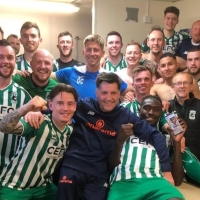
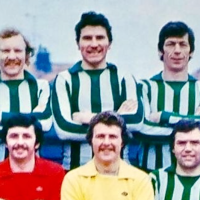
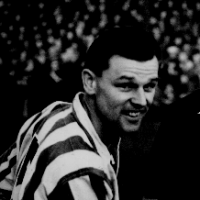
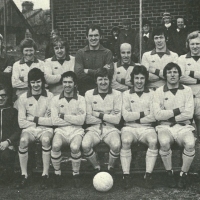

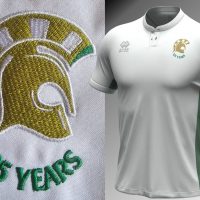

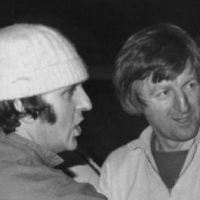

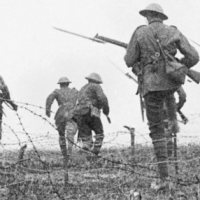
Pingback: The fallen Spartans of The Great War. | Blyth Spartans AFC – making history since 1899
Pingback: Spartans super fan is still counting. | Blyth Spartans AFC – making history since 1899
Pingback: Players from the past – Peter Mackin 1908 to 1910 & 1911/12. | Blyth Spartans AFC – making history since 1899
Pingback: The history of Blyth Spartans kits and colours. | Blyth Spartans AFC – making history since 1899
Pingback: Playing away. | Blyth Spartans AFC – making history since 1899